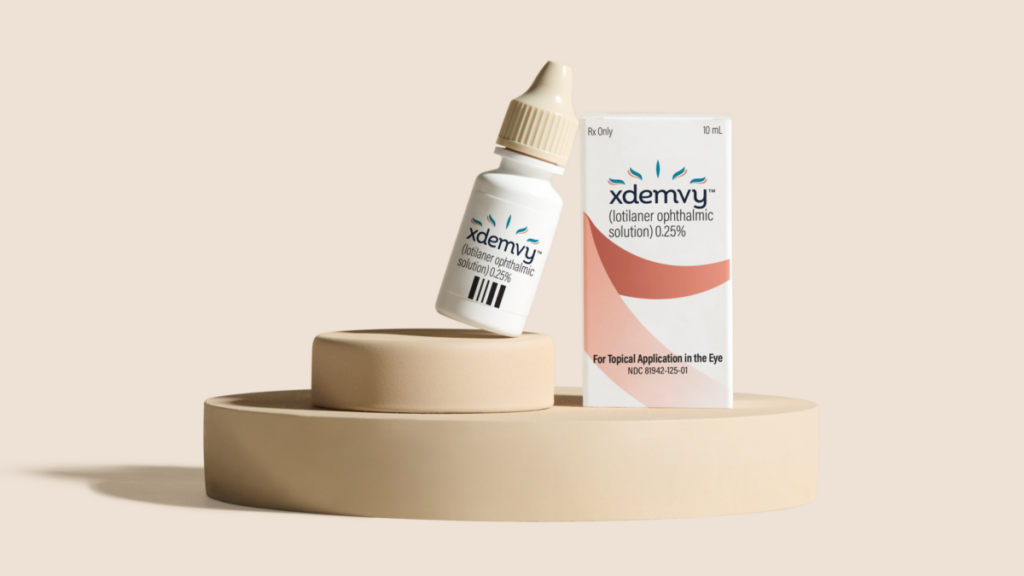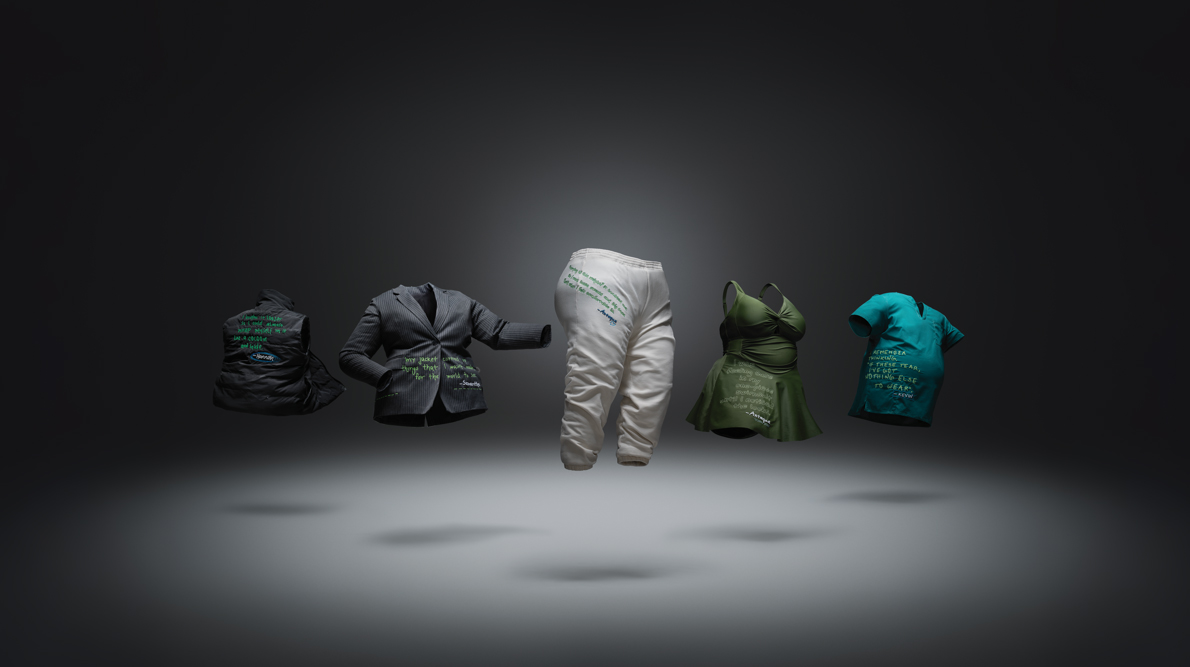California-based Tarsus Pharmaceuticals Inc., a leader in developing therapeutic solutions for common diseases with limited treatment alternatives, has secured approval from the US Food and Drug Administration (FDA) for its drug, Xdemvy (lotilaner ophthalmic solution) 0.25%. Xdemvy is now authorized to treat Demodex blepharitis, offering a new option for affected patients.
“Demodex blepharitis, easily diagnosed by the presence of eyelash collarettes, can result in ocular damage in multiple ways, including irritation, eyelash distention or loss and inflammation, which can be uncomfortable for patients. This new medicine is a positive step forward for the treatment of this disease in many patients who have been struggling for years,” said Christopher Starr, MD, associate professor of ophthalmology at Weill Cornell Medicine, New York Presbyterian Hospital, in the company’s press release.
What Is Demodex Blepharitis?
Demodex blepharitis is a widespread inflammatory eye condition that often remains undetected, affecting the skin, eyelashes, lash follicles and sebaceous glands. The condition is attributed to an infestation of Demodex mites, ectoparasites commonly present on human skin. Symptoms include swollen and irritated eyelids, ocular burning, itching, a sensation of a foreign body in the eye, crusting, matting and even eyelash loss. Additionally, the condition can lead to secondary issues such as rosacea, chalazion, meibomian gland dysfunction, trichiasis, dry eye syndrome, keratitis and inflammatory conjunctivitis.
In the US, Demodex blepharitis affects nearly 25 million individuals, equating to 1 in every 12 adults. A retrospective study examining the presence of Demodex-induced collarettes found that, of 1,032 patients visiting one of six US eye clinics, an alarming 57.7 percent were diagnosed with Demodex blepharitis. Collarettes were identified in 69.1 percent of these diagnosed cases, underscoring the need to identify and treat this condition to ensure the well-being of those affected.
XTALKS WEBINAR: Harnessing the Value of Data to Maximize Your eClinical Assets
Live and On-Demand: Monday, September 18, 2023, at 1pm EDT (10am PDT)
Register for this free webinar to learn about maximizing eClinical assets. The featured speaker will uncover common integration pitfalls, improved methods to analyze data, the implications of data changes and ways to maximize reconciliation efforts.
How Does Xdemvy Work?
Xdemvy, specifically formulated as an ectoparasiticide (anti-parasitic) for Demodex blepharitis treatment, contains the active ingredient lotilaner, a member of the isoxazoline compound family. Lotilaner selectively inhibits gamma-aminobutyric acid (GABA)-gated chloride channels in mites, causing a paralytic effect that leads to their elimination. Notably, when tested at concentrations up to 30 μM (18 μg/mL) in vitro — which is around 1,100 times the suggested human ocular dose — lotilaner doesn’t affect mammalian GABA-mediated chloride channels.
For optimal treatment, patients are directed to apply one drop of Xdemvy to each eye, twice daily, maintaining roughly a 12-hour interval between doses, for a six-week period. This regimen is designed to effectively tackle Demodex blepharitis and foster patient healing.
Efficacy and Safety of Xdemvy
The FDA has granted approval to Xdemvy, backed by solid clinical evidence highlighting its efficacy as a therapeutic option. This endorsement stems from data acquired from two comprehensive, randomized, multicenter, double-masked and vehicle-controlled trials: Saturn-1 and Saturn-2. Collectively, these studies involved 833 patients, aiming specifically to evaluate Xdemvy’s safety and efficacy.
In both Saturn-1 and Saturn-2 trials, Xdemvy showcased significant efficacy. This was evident through marked improvements in the eyelids of participants. A defining feature of the disease, the presence of collarettes, was reduced to a maximum of two per upper lid by Day 43 in both studies. Some patients observed improvements as early as the second week of treatment. Furthermore, by Day 43, both studies recorded statistically significant strides in mite elimination (achieving a mite density of zero per eyelash) and the alleviation of erythema (attaining Grade 0).
Across the trials, Xdemvy maintained a favorable safety profile and was generally well-tolerated by participants. The primary ocular side effects noted were a stinging and burning sensation at the site of instillation, reported by 10 percent of participants. Less common ocular side effects like chalazion/hordeolum (stye) and punctate keratitis were cited by fewer than 2 percent of the study’s participants.
What Is the Price of Xdemvy?
Xdemvy is set to hit the market by August 2023, with an estimated annual list price of $1,850. Patients can expect their out-of-pocket costs to be around $100 or potentially even lower. It’s noteworthy that many major insurance plans may cover Xdemvy, although this depends on the specific terms of each individual policy.
Other Treatments for Demodex Blepharitis
Xdemvy stands as the first and sole approved therapeutic solution for Demodex blepharitis, directly addressing its root cause with remarkable efficacy, as validated through numerous clinical measures of disease.
Patients diagnosed with Demodex blepharitis typically received a prescription for an eyelid cleanser enriched with tea tree oil, known for its efficacy in eliminating Demodex mites. To ensure a thorough cleanse, patients are generally directed to gently apply the cleanser to the base of the eyelashes on both the upper and lower eyelid margins.
Beyond this cleanser, the FDA has endorsed an in-office procedure named BlephEx. This procedure, which takes just a few minutes, is crafted to address blepharitis and alleviate symptoms of dry eyes. By focusing on the removal of excess bacteria, biofilm and bacterial toxins — the chief culprits behind eyelid symptoms — BlephEx presents a potent solution for those looking for symptom relief.
Xdemvy distinguishes itself as the pioneering and only FDA-approved treatment for Demodex blepharitis, effectively targeting the primary cause of the condition. Its significant efficacy is supported by a multitude of clinical assessments.
“We are thrilled to announce the FDA approval of Xdemvy for the treatment of Demodex blepharitis and look forward to making this product broadly available to the millions of patients who have not had any FDA-approved therapeutics for this disease,” said Bobak Azamian, MD, PhD, CEO and chairman of Tarsus, in the news release.
“This tremendous milestone was achieved through a successful collaboration of our talented Tarsus team, countless eye care providers and the hundreds of patients who participated in our trials. We are grateful and honored for the opportunity to introduce the first and only approved therapeutic for this disease to the eye care community,” said Azamian.












Join or login to leave a comment
JOIN LOGIN